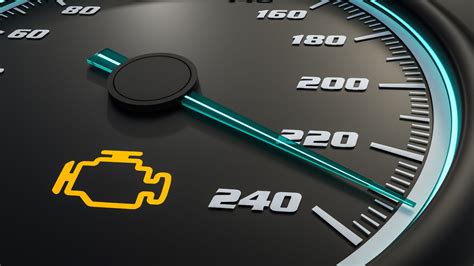How Far Can I Drive After Resetting My Check Engine Light?
Ignoring a check engine light is never a good idea. That illuminated symbol signifies a problem with your vehicle's engine, and continuing to drive could lead to significant—and expensive—damage. Resetting the light without addressing the underlying issue is even riskier. So, how far can you drive after resetting your check engine light? The short answer is: not far at all. You should only reset the light after addressing the problem and ideally, with the assistance of a qualified mechanic.
The check engine light doesn't just randomly turn on. It's triggered by one or more diagnostic trouble codes (DTCs) detected by your car's onboard diagnostic (OBD) system. These codes pinpoint specific issues within your engine, transmission, or emission system. Simply resetting the light with an OBD-II scanner or similar device doesn't fix the problem; it merely clears the code from the system's memory, hiding the warning.
What Happens When You Ignore a Check Engine Light?
Driving with a malfunctioning engine component can lead to a cascade of problems. Ignoring the warning could result in:
- Increased fuel consumption: A faulty oxygen sensor or mass airflow sensor, for example, can significantly impact fuel efficiency.
- Reduced engine performance: Problems with ignition systems, fuel injectors, or sensors can lead to decreased power and sluggish acceleration.
- Increased emissions: A malfunctioning catalytic converter or other emission control component can cause excessive pollutants to be released into the atmosphere. This can lead to failing emissions tests and potential fines.
- Catastrophic engine failure: Ignoring severe issues like low oil pressure, coolant leaks, or significant internal engine problems can lead to complete engine failure, requiring costly repairs or even replacement.
Why Resetting the Check Engine Light Doesn't Solve the Problem
Resetting the light is a temporary fix, like applying a bandage to a broken bone. The underlying problem persists, potentially worsening with every mile driven. The original trigger for the light could return, or new problems could arise as a result of the unresolved initial issue.
Think of it like this: Your car is telling you something is wrong. Resetting the light is like silencing the alarm clock without getting out of bed. You might feel better momentarily, but the problem still exists and will eventually demand your attention.
Should I Reset My Check Engine Light Myself?
While many OBD-II scanners allow for code clearing, you should only reset the light after you've identified and resolved the issue that triggered it. Simply clearing the code without fixing the problem will only postpone the inevitable.
Here's what you should do:
- Diagnose the problem: Use an OBD-II scanner to retrieve the DTCs. Research the meaning of the codes online (many resources are available) or consult a repair manual.
- Attempt minor repairs (if possible and you are experienced): If you have some mechanical aptitude and the problem seems straightforward (e.g., a loose gas cap), you might be able to fix it yourself.
- Consult a mechanic: For more complex issues, consult a qualified mechanic. They possess the diagnostic equipment and expertise to accurately identify and repair the problem.
- After repair, have the mechanic clear the code: The mechanic will clear the code after confirming the repair has resolved the issue. This ensures the light stays off.
How Far Can I Drive After a Successful Repair and Code Reset?
After a successful repair and code reset by a qualified mechanic, you can drive your car normally. However, it's a good idea to monitor the light for a few days to ensure the problem doesn't reoccur. If the light returns, you'll need to revisit the issue with your mechanic.
Frequently Asked Questions (PAA)
While researching this topic, several questions repeatedly emerged, suggesting popular concerns related to check engine lights. Let's address some common queries:
What does it mean when my check engine light flashes?
A flashing check engine light indicates a serious problem that requires immediate attention. Continuing to drive with a flashing light could cause significant damage to your engine or transmission. Pull over safely as soon as possible and contact a mechanic.
Can I pass a smog check with the check engine light on?
Generally, no. Many states require a functioning emissions system, and a check engine light often indicates a problem with this system, resulting in a failed smog check. Resolve the underlying problem before attempting the inspection.
How much does it cost to fix a check engine light?
The cost varies widely depending on the cause. A simple issue like a loose gas cap can be resolved for free, while a more complex problem could cost hundreds or even thousands of dollars to repair.
Is it safe to drive with a check engine light on?
It depends on the severity of the problem. While some issues might not immediately cripple your car, driving with a check engine light on can cause further damage and potentially lead to more expensive repairs. It's always best to address the underlying issue as soon as possible.
In conclusion, while you might be tempted to reset your check engine light and ignore the warning, it's crucial to understand that this is a risky approach. Address the underlying problem promptly, and only reset the light after the repair is complete. Ignoring the warning could lead to significant and costly vehicle damage. Always prioritize vehicle maintenance and safety.

